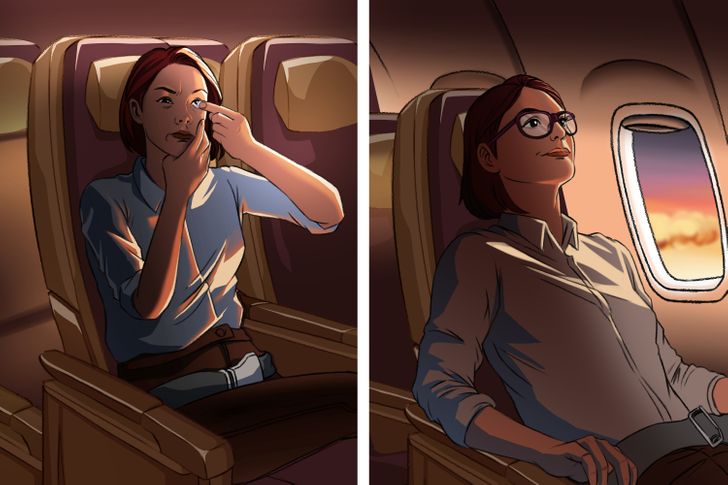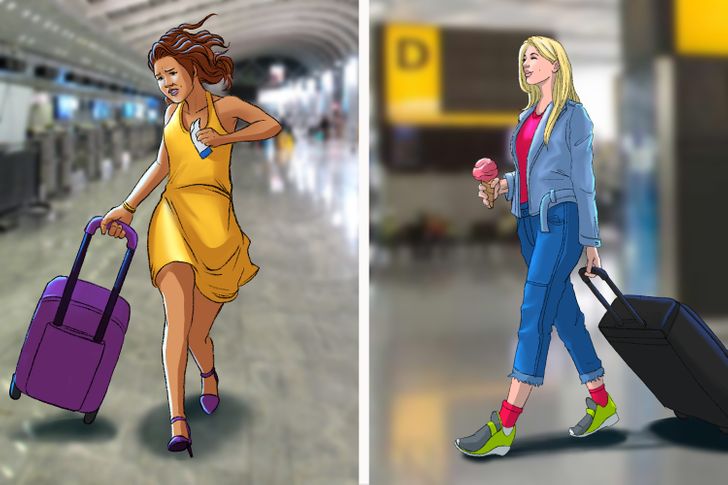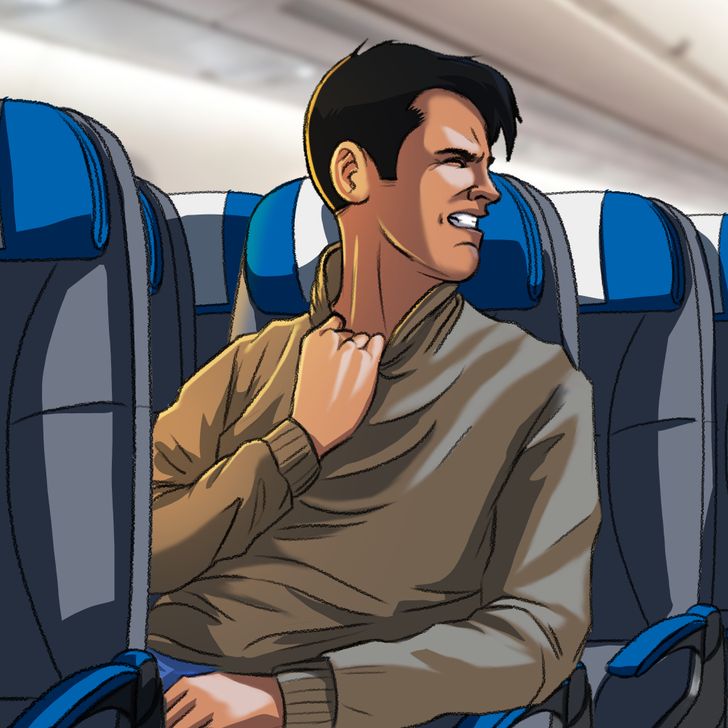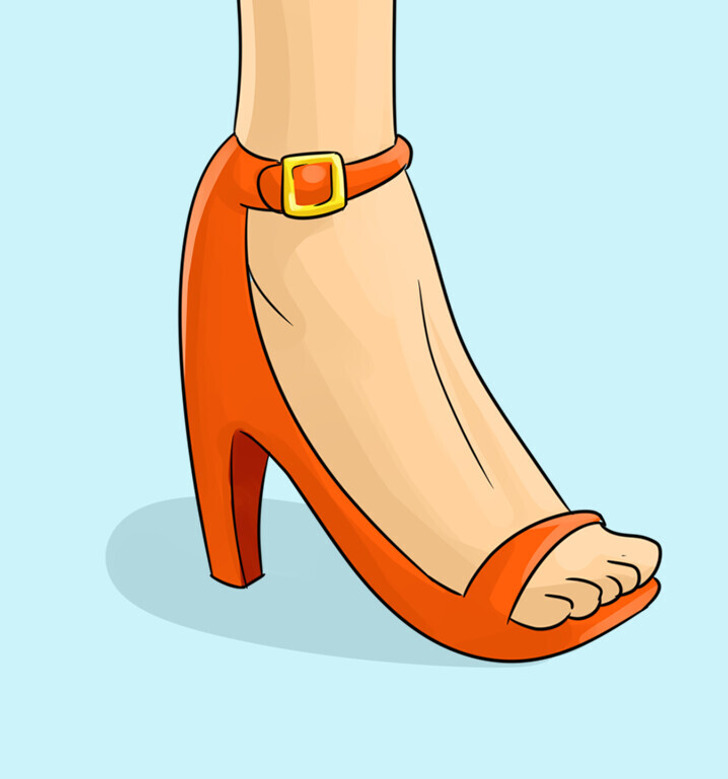15+ People Honestly Shared How and Why They Decided to Get Divorced

Flying planes isn’t always comfy, but dressing right can help. Consider the temperature onboard, wear comfy clothes, and skip metal accessories to breeze through security. A soft wireless bra and a cozy outfit can make your flight more pleasant.

Swap out the uncomfortable claw clip for a more comfortable option. Instead, opt for a soft scrunchie or a stylish cap. Claw clips may be cute, but they can be uncomfortable when leaning back against a headrest. For a more pleasant experience, tie your hair into a loose bun with a soft scrunchie or achieve a sleek look with a smart cap. Just remember to take off your cap when going through airport security.

Your skinny jeans may look great, but they may make for an uncomfortable flight. You want to wear something that allows for proper blood circulation. Furthermore, longer flights may put you at risk of deep vein thrombosis (a blood clot that typically occurs in the leg). This condition could be exacerbated by tight clothes.
Our bodies also tend to swell when we’re 42,000 feet in the air, so your figure-hugging clothes may begin to feel like a second skin instead of a fashion statement.

The air in a plane is different than the air on land. This is because cabin air is circulated, and high altitudes result in lower humidity. This dry air can be irritating to the eyes, especially for those who wear contacts. For this reason, it’s suggested that passengers wear their glasses instead.

Swap out the discomfort of a bra with underwire for a more pleasant experience at 35,000 feet. Opt for a soft wireless bra instead. Wearing an uncomfortable bra can be especially bothersome during a flight, so why spoil the comfort of a relaxed top with a rigid bra? Luckily, there are plenty of alternatives available.

Have you ever been out of breath by the time you reach your flight gate? That’s because airports are big places, making wearing comfortable walking shoes ideal. High heels can be especially troublesome in emergency situations.
Additionally, high heels are not made of stretchy fabric and can often be tight. On long flights, our feet tend to swell, so comfortable, spacious shoes are preferable.

Flights are often kept on the colder side to help prevent fainting. You may also feel colder than necessary because you’re not moving. This is why it’s wise to wear more than one layer of clothing so that you can adjust to the temperatures accordingly.

You don’t want to find yourself having to use the restroom on a flight only to get stuck trying to take off your jumpsuit. Complicated outfits don’t just make going to the bathroom harder, but they can be very uncomfortable to sit in. You don’t want to have to re-adjust your clothes every 5 minutes, so make sure you wear something that has been tried and tested as comfortable.

A fabric might not feel too itchy when you wear it to the shops and back, but not all fabrics are great to sit in for hours at a time. Wear fabrics that are breathable and soft to prevent chafing or skin irritation on your flight.

You want your flight to go as smoothly as possible. This is why it’s better to avoid T-shirts with expletives or offensive graphics on them. You could get kicked off a flight if you’re dressed too inappropriately. There are also children on flights, and you never know what people will find offensive, so it’s best to play it safe.

If you’re going to a warm place, you might be tempted to wear sandals on the plane. But think twice. The carpets and areas under the seats may not have been cleaned in a long time. “Also always wear shoes in the bathroom. Don’t think it’s just water on the floor — it probably isn’t”, shared one of the flight attendants.











